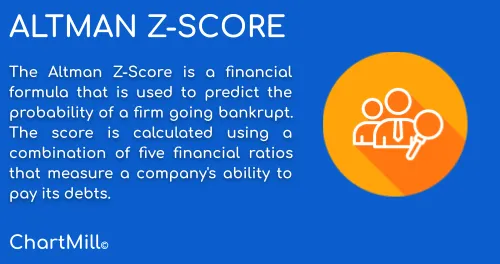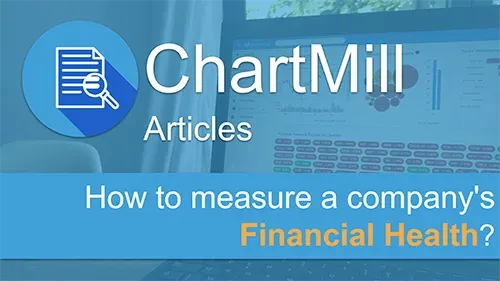Altman-Z score stock screener
By Aldwin Keppens - reviewed by Kristoff De Turck
Last update: May 3, 2023
Introduction
The Altman-Z score was developed in 1968 by Edward I. Altman on the basis of scientific research, looking for a model to predict whether a company may or may not go bankrupt. It is therefore a calculation model that allows to determine the creditworthiness of a company. Some background and the exact calculation can be found on investopedia.
For this purpose multiple ratios are used in the formula, such as:
- Ratio of profit / assets
- ratio revenues / assets
- Ratio market value shares / book value debt
- Ratio of retained earnings and assets
- Ratio of working capital and assets
Not all variables are equally important and therefore they are each assigned a different weight. The sum of all ratios yields a score. The higher the score, the smaller the chance the company will go bankrupt.
A score of 1.8 or less is a serious indication of a creditworthiness problem, anything over 3 gets the status 'healthy'. A score between 1.81 and 2.99 is defined as 'neutral'.
As with many other ratios and formulas, one has to deal with too fast or too general conclusions. A few points must be taken into account when interpreting the score:
- The price of a company's share is not constant and because the stock price is one of the variables in the score it has to be taken into account. When the general sentiment on the stock market is good, there are more buyers and even the smaller companies will benefit from it to a certain extent. The result is that this score will be higher if the stock market is doing well and generally lower in times where the stock market is rather negative.
- The score can not take into account unexpected exceptional events, which may cause a company to be on the brink of bankruptcy very quickly. Smaller (growth) companies are obviously more sensitive to this risk than bigger ones...
Meanwhile, there are some variations on the original Altman-Z score in circulation, such as specific derivative scores for private companies or for public service companies. The filter in our screener is the original formula that is still used for public industrial companies.
Altman-Z score Stock Screener
You can view the Altman-Z score in the results of our stock screener. Use either the FA table or Fundamental views. (Or any custom view displaying the score of course).
You can find 2 example screens here:
- This list shows a selection of US shares with a minimum price of $10 and an average trading volume of at least 1 million shares(the average is measured over the last 50 trading days), with the Altman-Z score higher than 3. These filter settings select US companies that have very little chance of bankruptcy in a short period of time.
- This list has the same filters as the above list, but instead of using an Altman-Z score higher than 3, a score of less than 1.5 is selected in this case. Thus, we get US companies whose creditworthiness can be seriously challenged.



